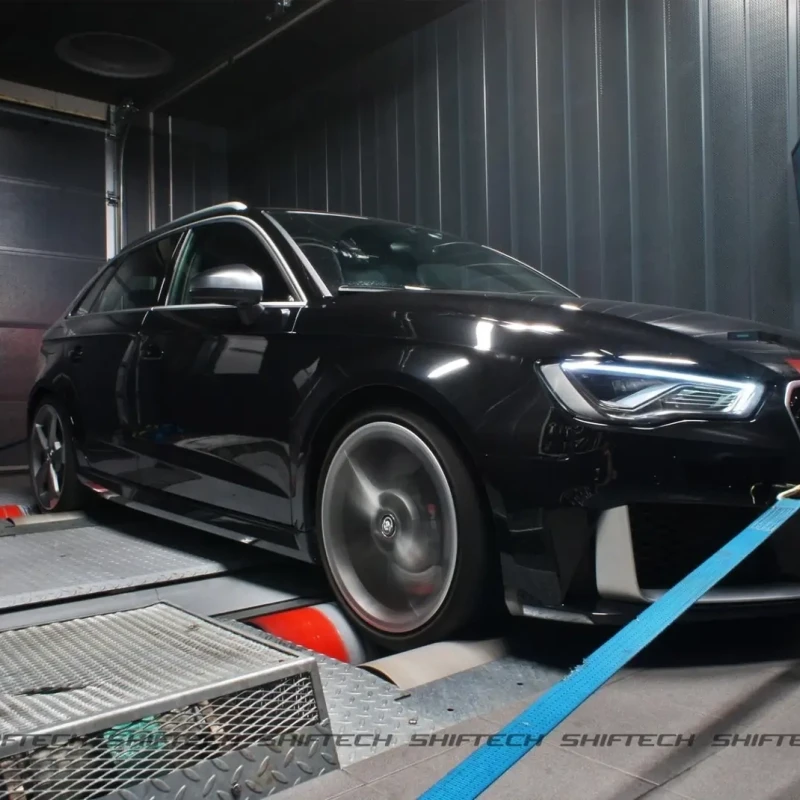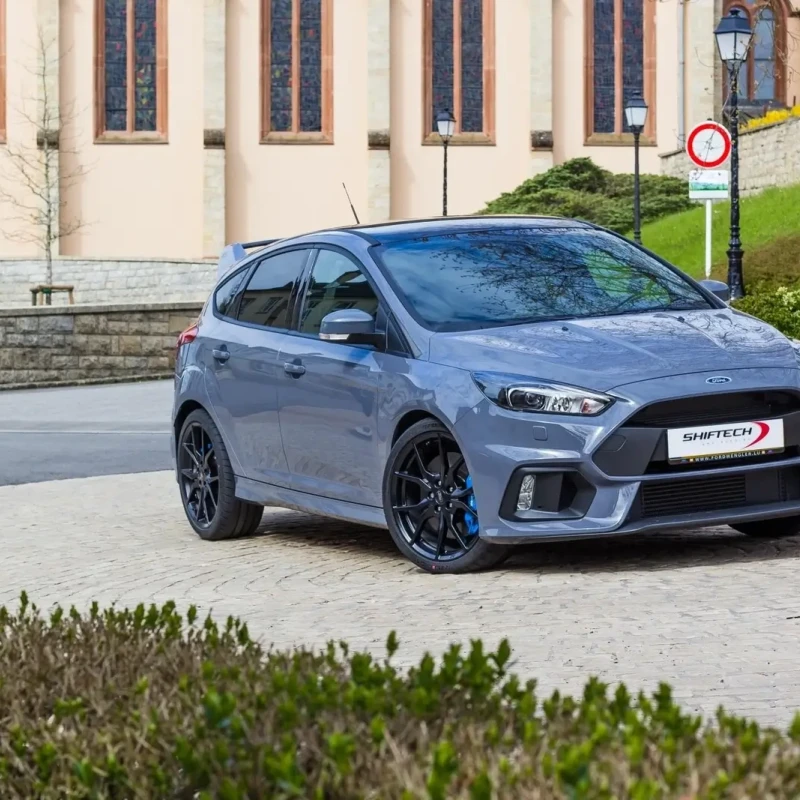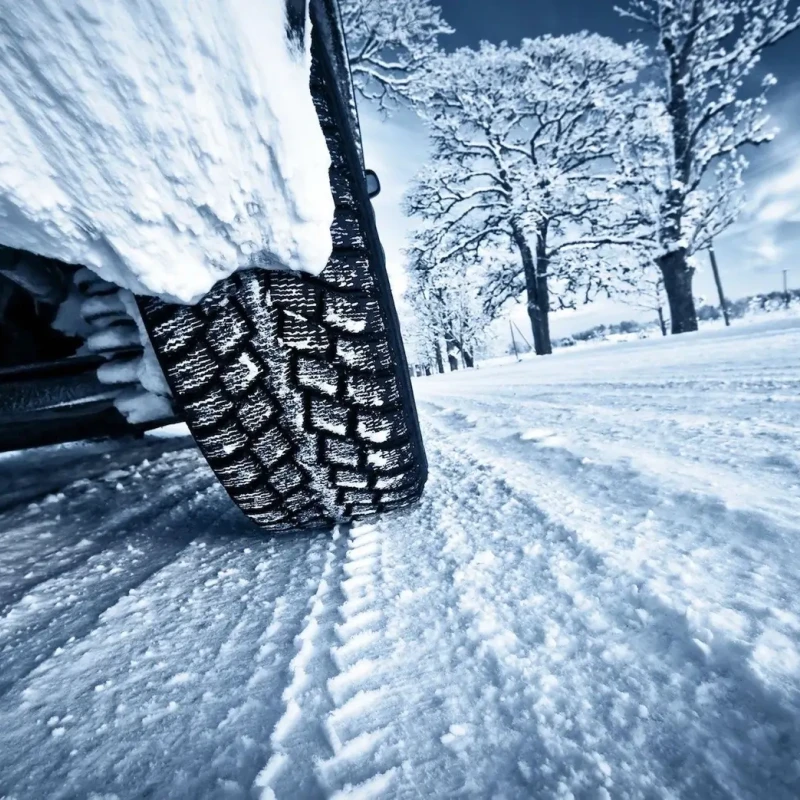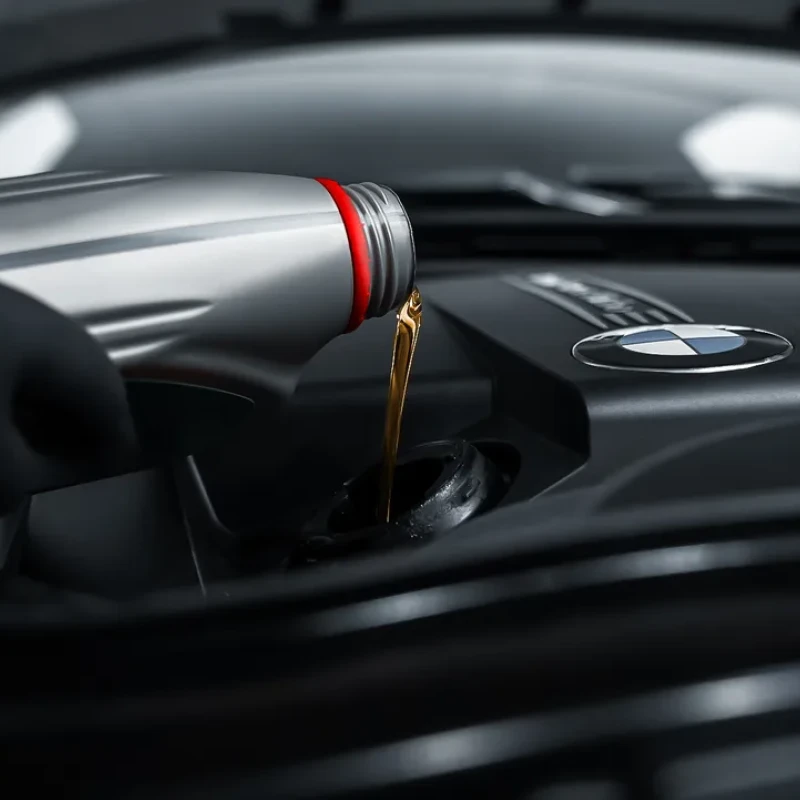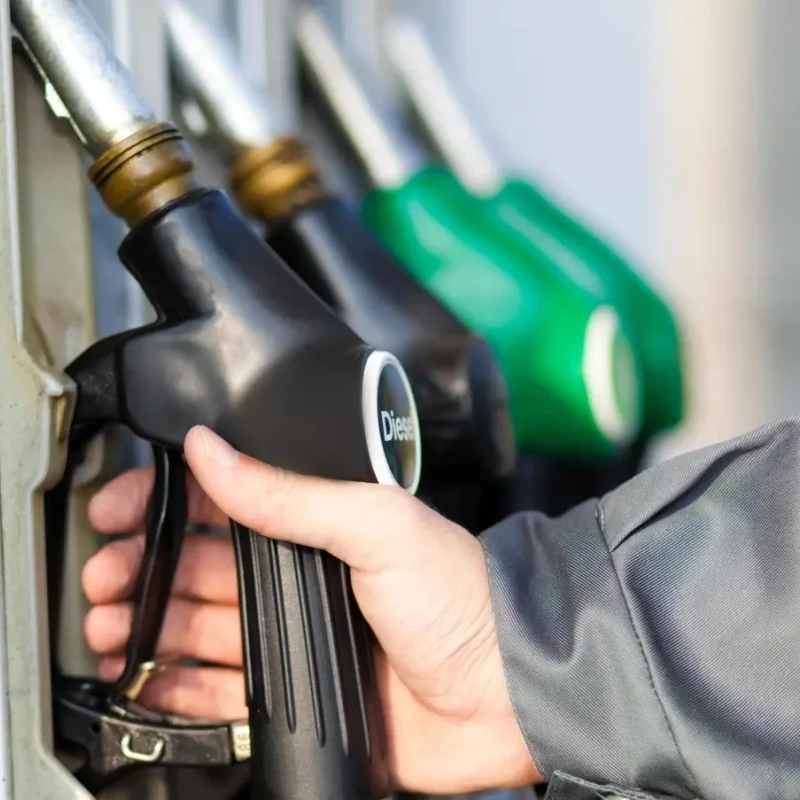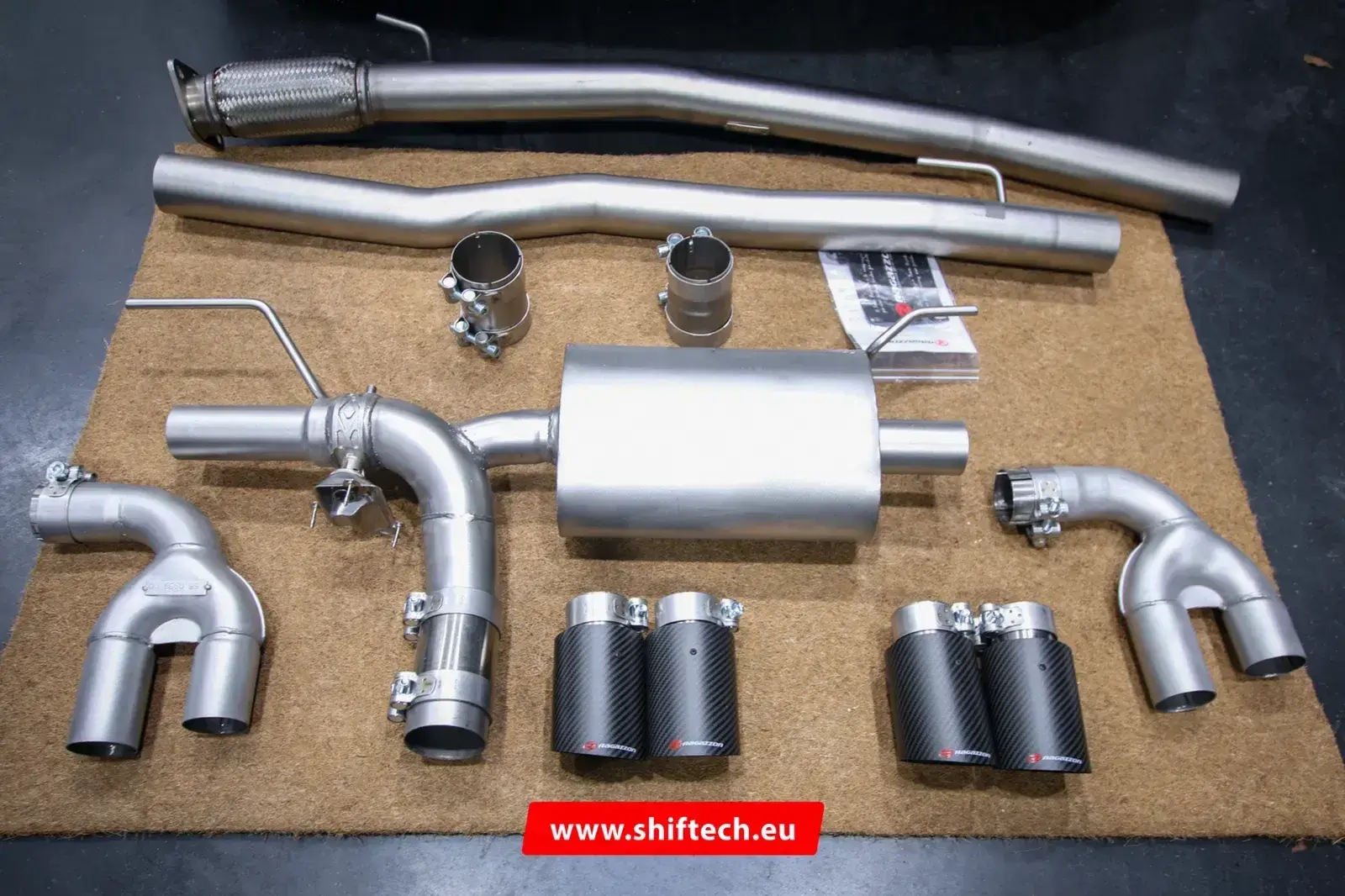
TOWARDS A SILENT AUTOMOTIVE WORLD!
Let's take a look at the reasons for this phenomenon and what we can do about it.
We've all asked ourselves this question when we see a car driving down the road, but which engine is it? Petrol or diesel? Big or small? A few years ago, it was still fairly easy to tell the difference, but recently it's become increasingly complicated, and we're going to try and understand why.
Most people like cars that sound good, and that's because, generally speaking, sound is linked to performance. Take, for example, a 3-cylinder Golf 1.0 TSI, which will sound far inferior and far more monotonous than the V10 of an Audi R8...
But lately we can see that almost all cars, whether sporty or not, have started to become much quieter, and we can almost pinpoint when this transition took place: 1 September 2017.
That's when the Euro 6 standard came into force. This meant that new cars were now even more limited in the amount of CO2 and particulates they could emit. That's a good thing, don't get me wrong, we all need cleaner air, that's a fact, but it meant that in order to meet these limits, cars had to be fitted with a special filter called the Filtre À Particules" FAP in French, also known as "OPF" for OttoPartikelFilter in German or "GPF" for Gazoline Particulate Filter in English. These are a number of different acronyms that ultimately mean the same thing: a watermelon-shaped filter that does its job by capturing most of the pollutant emissions, but also, at the same time, all the sound.
Let's take the image of an opera singer's mouth as an exhaust. She may be the most incredible of singers, but if we put a hand in front of her mouth like a DPFS, all of a sudden the sound of her voice will be muffled and will lose all its interest.
the way vehicles are tested for pollutant emissions and fuel consumption has also changed - welcome to the new WLTP standard! What is WLTP? WLTP stands for Worldwild Harmonised Light Vehicle Test Procedure and is a new global cycle designed to measure the fuel consumption and CO2 emissions of light vehicles.
The WLTP cycle offers test conditions that are more representative of average driving conditions, and is therefore the successor to the NEDC (New European Driving Cycle), which is considered to be too theoretical. The aim is to provide values for fuel consumption and CO2 and nitrogen oxide (NOx) emissions that are closer to reality. With the European Union's objective of reducing CO2 emissions by 30% by 2030, the EU has set a maximum threshold of 95 grams of CO2 emitted per kilometre travelled. Manufacturers must therefore comply with the WLTP cycle in order to obtain type approval for their vehicles.
Sports cars (too) must meet the standard, and must now be tested in their highest power mode. This means that Sport mode becomes the reference mode for testing, which is why it becomes as boring as the good old Comfort mode: more pop, more feedback, more roar, less fun...
There are a few notable exceptions, Lamborghini got away without having to fit a DPFS on its cars, in fact, there is the possibility of an exemption for those producing small series, but the next generation is likely to be fitted with a hybrid powertrain, or a DPFS, or a combination of the two.
At Ferrari, these are already available! The Ferrari F8 Tributo was the first prancing horse to be fitted with a particulate filter, and the same goes for the 812GTS. They have worked very hard to try and preserve their trademark sound. They have reworked all the rear silencers to keep the sound as present as possible. As for the F8 Tributo, it has an additional intake sound integrated into the cabin, which generates a sound volume that is now 5 dB higher than that of a Ferrari GTB at the same engine speed.
and on the German side, Bentley? FAP! Audi? DPFS! Porsche? DPFS! In fact, VAG as a whole has decided that all cars powered by their TFSI or TSI engines will be fitted with a petrol particulate filter. They're not taking any chances, and nobody can really blame them when you consider the group's record on this subject.
There are some hopeful examples, such as the Jaguar F type R. Everyone knows how demonic the vocals of its V8 are. So how did Jaguar's engineers get round it? They didn't really. They simply relied on their engine, which simply roars well by nature, so even fitted with a DPFS, the sound remains more than adequate. Next, particular attention was paid to the exhaust. They worked meticulously on the parts downstream of the DPFS to ensure that a sound worthy of the name could come out of this V8, despite the filter.
But we're not going to lie, it still doesn't sound as good as it used to...
So what solutions are available to us today?
To help you understand, let's look at the different components that make up an exhaust system. It is attached to the cylinder head and collects the gases, redirecting them to the turbo and then to the downpipe. It is on this downpipe that the anti-pollution systems are usually located, firstly the catalytic converter and then the DPFS. For a Stage 2 preparation, this is the part of the exhaust on which you need to intervene to free the 'plug' created by the original catalytic converter. created by the original catalytic converter, replacing the device with a less restrictive part to improve performance and sound.
Next comes the so-called Cat-Back section, which includes the mid and rear silencers, right down to the tailpipes.
Let's start with the legal optimisation options. Numerous brands such as Akrapovic, Milltek, Supersprint and many others offer aftermarket sports exhaust solutions approved to CE or TUV standards. These exhausts comply with current European standards in terms of pollutant emissions and maximum decibel levels. As a result, the sound will be louder than the original, but within the limits recommended by European law.
But peace of mind comes at a price... It's important to be aware that homologation entails an additional cost for manufacturers, and this is reflected in the price. If you compare it to a non-approved system, the price can quickly double.
Non-approved exhaust systems - let's get down to it. It's important to realise that once your vehicle has been fitted with parts that don't comply with current standards, it can no longer be driven on public roads. This can range from modification to the outright removal of the anti-pollution system via an empty pipe.
If the catalytic converter and/or DPFS are removed altogether, the vehicle will no longer be able to pass the tests when inspected by the police, and will no longer be able to pass the roadworthiness test. In France, this is an illegal practice which, according to Article L. 318-3 of the 2014 Highway Code, could result in the professional responsible for this service incurring a penalty of €7,500 and the administrative closure of his establishment.
For petrol vehicles, the installation of an HJS sports catalytic converter (not CE approved) is recommended, as it will be able to pass the anti-pollution tests and maintain sufficient back pressure for your engine to function properly. For those on a tighter budget, the 'race' sports catalytic converter will be more affordable, but will not pass the anti-pollution tests either.
In the case of changing parts on the Cat-Back section, the gain will only be in terms of noise and will have no effect on the performance or pollutant emissions of your vehicle.
There is also an alternative solution that will thrill purists: the active sound system. This is a sound generator that reproduces the sound of a large petrol engine via a loudspeaker built into a watertight stainless steel structure. This system can be fitted to both diesel and petrol vehicles without affecting the original exhaust system.
It is a process that is used as standard by many manufacturers, including BMW and AUDI. ( https://www.youtube.com/watch?v=YLUAm4Kr05g )
Conclusion
Of course we love modern cars, with their ever more powerful engines and ever more efficient chassis, but it's hard not to become nostalgic when we turn to the bewitching songs of the past...
As we've seen, a number of solutions still exist, so let's make the most of the roar while there's still time.
If you feel like it, at ShifTech we offer a wide range of exhaust solutions, and we can advise you on a selection of major brands to ensure that the sound of your car comes close to your ideal.
Learn more
View articles
Similar

